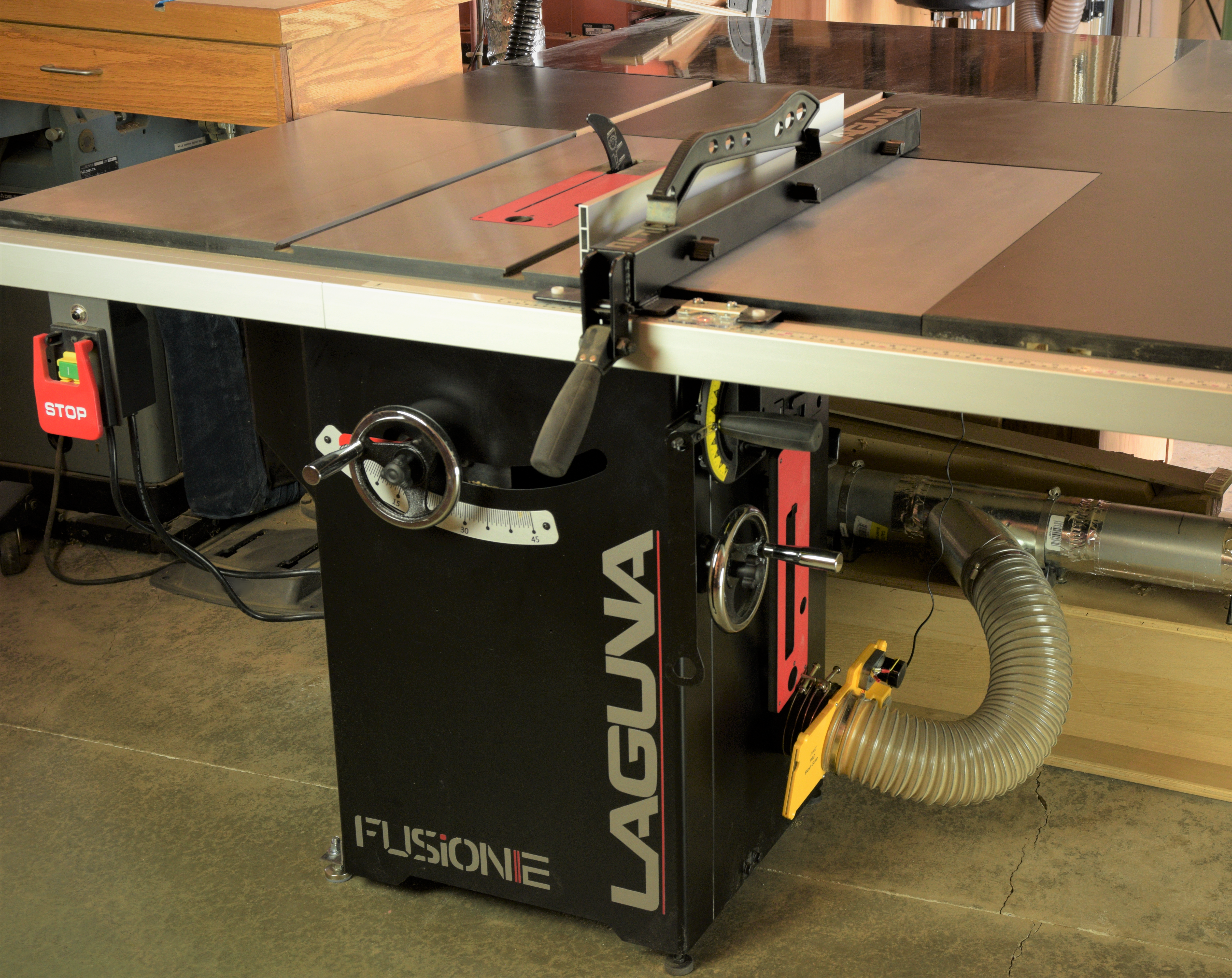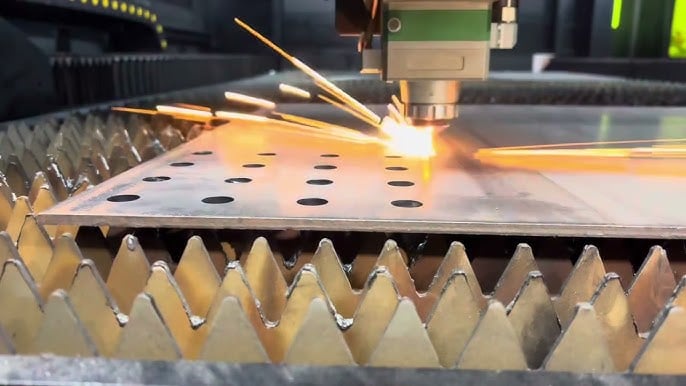- Tablesaw. Well, it probably comes as no surprise that a tablesaw is the centerpiece of most any shop. Even in a small or mid-sized woodshop, I can’t imagine daily operations without a good tablesaw like the Fusion F2 with Hi-Low rip fence, and a true riving knife. If you choose a new model F2 or F3, they even include a double window fence cursor, and a blade angle DRO. See the details on the new models here!

- Bandsaw. Running a close 2nd behind a tablesaw in my shop is a good steel frame bandsaw. My 1412 bandsaw makes resawing wide boards a simple task. But it can also tackle freehand curves, notches and joinery cuts just as easily. Check out my “half-laps at the bandsaw” blog here!

- Dust Collector. Okay, you’ve got some big power tools now. Better shop for a collector that can handle all those chips. There are a few choices to consider, from a single-stage entry level dust collector to a more advanced cyclone system. Do you want a portable unit that can be wheeled from tool to tool? Or does a large stationary system make more sense in your shop? Only you can say for sure, but I’d recommend a system with a drum that’s easy to move and empty.

- Long bed Jointer. Some would argue you should buy a planer before a jointer. I feel like a jointer is one of those reference tools that makes lumber flat and square. Every other step in woodworking depends on the accurate milling done on a jointer. It’s especially helpful if the jointer has a long bed, particularly on the infeed side. The JX8 jointer features an innovative pull-out infeed roller to support longer boards. In fact, jointers have improved quite a bit since the last time you went shopping for one. Parallelogram bed adjustment, Sheartec II helical cutterhead, and convenient topside control panel are just a few of the features to look for. Add the safety of a full-length knee stop bar, and the ergonomics of a foot-well and integral mobility kit (standard on all 6” and 8” models) and you have an essential tool that’s been honed to perfection.

- Planer. Rounding out the top 5 small shop power tools is a planer. My advice is to shoehorn the biggest planer possible into your shop. It opens up doors to so many new projects when you can handle 16” or even 20” wide panels. Suddenly, coffee tables and desks become much more manageable to build! Normally, a 20” wide planer would be too large to fit into a small shop space, however the PX20 features pull-out infeed and outfeed roller supports. This greatly reduces the tools overall footprint, and makes it a great fit for small to medium shops. Plus, you’ll be amazed with the increased productivity of a true 5 hp planer that can handle deep cuts and multiple boards at the same time. Add the optional wheel kit for unrestricted shop mobility.

Honorable mention! While it didn’t make the cut for the top 5, a router table deserves a quick mention. At some point, every shop will need to add a router table for routine shaping and milling tasks. Maybe this list has inspired you to upgrade one of your mainstay power tools in the shop. There’s just no substitute for the ‘right tool for the job.’
Willie Sandry is a Freelance Writer for all the major woodworking magazines, blogger, crafter and YouTuber. Check out his latest projects on his channel the Thoughtful Woodworker.




